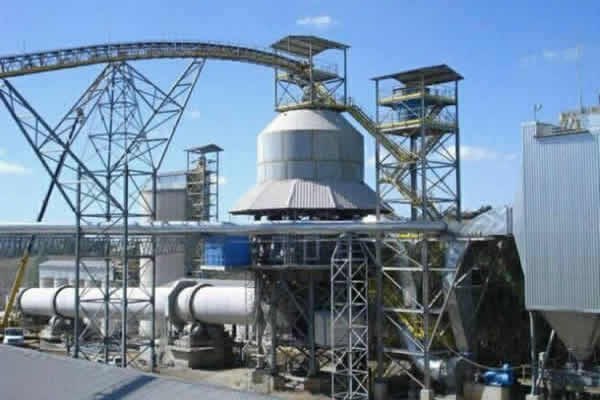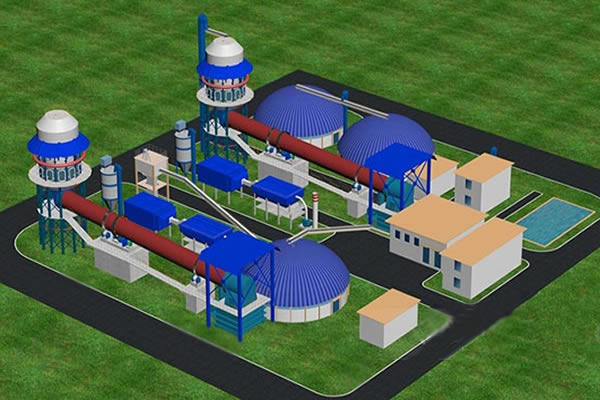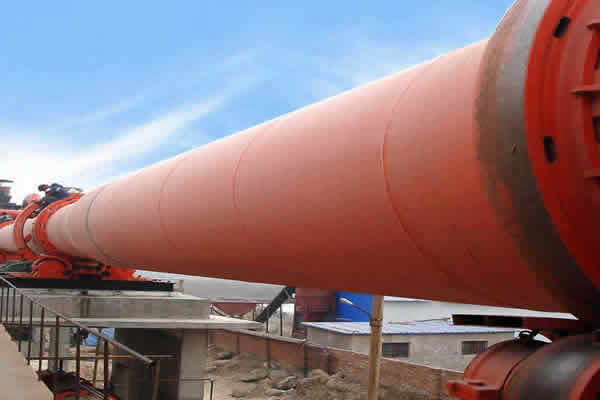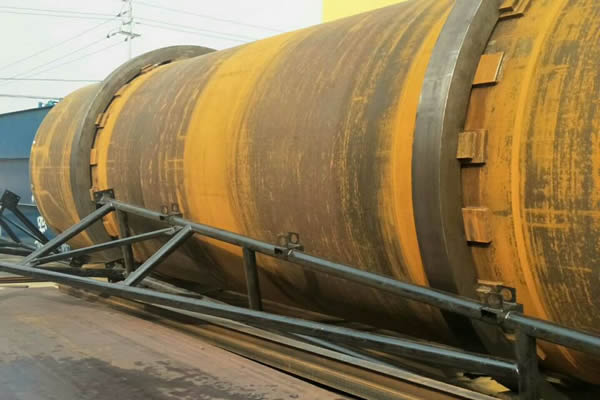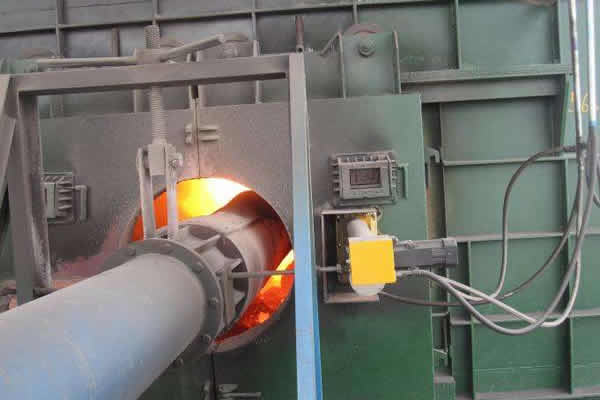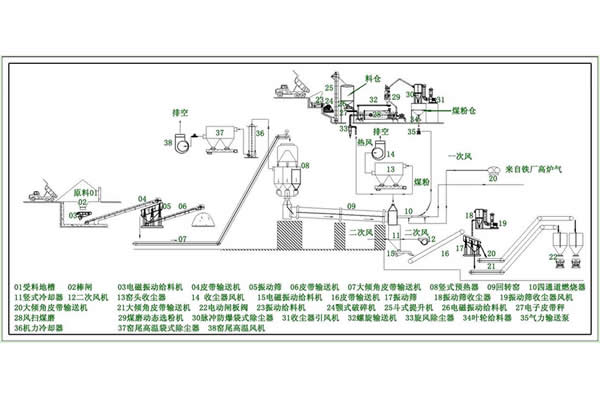Description
Rotary kiln is a vital piece of equipment in cement production. It is a large, rotating cylindrical vessel that is used to heat raw materials to a high temperature, leading to the formation of clinker. Clinker is a semi-finished product that is further ground into cement. The rotary kiln is a complex piece of equipment, with many variables that can impact its performance. This article will discuss the working principle of the rotary kiln, the clinker production process, the factors that affect its efficiency, and its importance in cement production.
I. Working Principle of the Rotary Kiln
The rotary kiln is a large, rotating cylinder that is inclined at a slight angle to the horizontal. It is typically 50-120 meters long and 2-6 meters in diameter, and is lined with refractory materials. The kiln is driven by a motor and rotates on its longitudinal axis. Raw materials are fed into the kiln at the upper end, while fuel is injected into the lower end.
The rotary kiln can be divided into three zones: the preheating zone, the calcining zone, and the clinkering zone.
Preheating Zone: In this zone, the raw materials are heated by the hot gases from the calcining zone. The temperature in this zone typically ranges from 600-800°C, and the moisture in the raw materials is driven off.
Calcining Zone: In this zone, the raw materials are heated to a temperature of 1300-1500°C, which leads to the formation of clinker nodules. The chemical reactions that take place in this zone are complex and involve the decomposition of calcium carbonate, the formation of calcium oxide, and the reaction of calcium oxide with silica and alumina.
Clinkering Zone: In this zone, the clinker nodules are heated to a temperature of around 1450°C, which causes them to fuse together. The clinker is then cooled and transported to the next stage of the production process.
II. Clinker Production Process
The clinker production process in a rotary kiln can be divided into three stages: raw material preparation, clinker production, and clinker cooling.
Raw Material Preparation: The raw materials used in cement production, such as limestone, clay, and iron ore, are crushed and ground into a fine powder. This powder is then mixed with small amounts of gypsum and other additives to form a raw meal.
Clinker Production: The raw meal is fed into the rotary kiln at the upper end, and is gradually heated as it travels through the kiln. As the temperature rises, the raw materials begin to melt and fuse together, leading to the formation of clinker. This process involves both physical and chemical reactions.
Clinker Cooling: The clinker is discharged from the rotary kiln at the lower end, and is cooled by air or water. The cooled clinker is then ground into a fine powder, and gypsum is added to regulate the setting time.
III. Factors Affecting Rotary Kiln Efficiency
The efficiency of the rotary kiln is influenced by several factors, including the properties of the raw materials, the selection of fuels, heat transfer and heat transport, environmental factors, and operation and maintenance practices.
Properties of Raw Materials: The properties of the raw materials, such as particle size, moisture content, and chemical composition, can affect the efficiency of the rotary kiln. For example, raw materials with a high moisture content can lead to reduced heat transfer efficiency and increased energy consumption.
Fuel Selection: The choice of fuel can have a significant impact on the efficiency of the rotary kiln. Different fuels have different heating values, ash content, and emission characteristics.
Heat Transfer and Heat Transport: The efficiency of the rotary kiln is closely related to the heat transfer and heat transport in the system. The heat transfer mechanisms in the kiln include radiation, conduction, and convection. The heat transport mechanisms include the movement of hot gases, the flow of materials, and the rotation of the kiln. The design of the kiln, including its size and shape, as well as the arrangement of the refractory lining, can affect these mechanisms and thus the efficiency of the kiln.
Environmental Factors: Environmental factors, such as ambient temperature and humidity, can affect the efficiency of the rotary kiln. High ambient temperatures can lead to reduced heat transfer efficiency, while high humidity can lead to increased energy consumption.
Operation and Maintenance Practices: Proper operation and maintenance practices are critical to maintaining the efficiency of the rotary kiln. Regular maintenance, including cleaning and inspection of the refractory lining, can help to prevent damage and prolong the life of the kiln. Proper operation, including the use of appropriate process control systems, can also help to optimize the performance of the kiln.
IV. Importance of Rotary Kiln in Cement Production
The rotary kiln is a critical piece of equipment in cement production, and its efficient operation is essential to the overall performance of the process. The kiln is responsible for the transformation of raw materials into clinker, which is then ground into cement. The quality of the clinker produced in the kiln has a direct impact on the quality and performance of the final cement product.
In addition to its role in clinker production, the rotary kiln also plays a key role in the energy efficiency of the cement production process. The kiln is one of the most energy-intensive components of the production process, and its efficiency has a significant impact on the overall energy consumption of the plant. Improvements in kiln efficiency, such as the use of alternative fuels or the optimization of the heat transfer mechanisms, can lead to significant energy savings and cost reductions.
V. Conclusion
The rotary kiln is a complex piece of equipment that plays a critical role in cement production. Its efficient operation is essential to the overall performance of the process, and is influenced by a range of factors, including the properties of the raw materials, fuel selection, heat transfer and heat transport mechanisms, environmental factors, and operation and maintenance practices. Improvements in kiln efficiency can lead to significant energy savings and cost reductions, and are essential to the continued development and sustainability of the cement industry.
